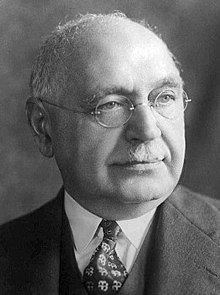Frank Schlesinger
| Frank Schlesinger | |
|---|---|
 |
|
| Born |
May 11, 1871 New York City |
| Died | July 10, 1943 (aged 72) |
| Nationality | American |
| Fields | astronomy |
| Institutions | Yerkes Observatory |
| Alma mater | Columbia University |
| Known for | Yale Bright Star Catalogue |
| Notable awards |
Valz Prize (1926) Gold Medal of the Royal Astronomical Society (1927) Bruce Medal (1929) |
Frank Schlesinger (May 11, 1871 New York City – July 10, 1943 Old Lyme, Connecticut) was an American astronomer. His work concentrated on using photographic plates rather than direct visual studies for astronomical research.
Schlesinger attended New York City public schools, and graduated from the College of the City of New York in 1890. He then worked as a surveyor, becoming a special student in astronomy at Columbia in 1894. In 1896, he received a fellowship which enabled him to study full-time, and he received a Ph.D. in 1898. After his graduation, he spent the summer at Yerkes Observatory as a volunteer assisting director George Ellery Hale. He was an observer in charge of the International Latitude Observatory, Ukiah, California, in 1898. From 1899 to 1903, he was an astronomer at Yerkes, where he pioneered the use of photographic methods to determine stellar parallaxes. He was director of Allegheny Observatory from 1903 to 1920 and Yale University Observatory from 1920 to 1941.
At Yale he worked extensively with Ida Barney He compiled and published the Yale Bright Star Catalogue. The first publication of the results of this work started in 1925 (Transactions of the Yale University Observatory, v. 4) and the work concluded in the 1980s. He made major contributions to astrometry. He was elected to the American Philosophical Society (1912), the National Academy of Sciences (1916) and the American Academy of Arts and Sciences and served as president of the American Astronomical Society (1919–1922), and the International Astronomical Union (1932–1935).
...
Wikipedia
